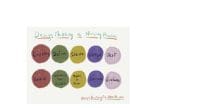Diversity in innovation is critical not only for the creation of solutions that meet everyone’s needs, but to bring a wide range of professional and lived experiences to the process. However, a 2016 study by Nager and colleagues of the demographic make-up of innovation in the United States found that women represented just 12% of all innovators. Asian, Black, Hispanic, Native American, and other races represented just 8%. Although Black Americans make up 13% of the population, they represented just 0.5% of innovators.
One survey isn’t necessarily representative of the diversity of innovation in the United States, so another way to assess is to examine the diversity and rate of patent application submissions. Patents protect the intellectual property that individuals or groups create. Inventions can include devices, machines, and other technologies but also art and manufacturing. A study of U.S. patents by Fechner and Shapanka found large disparities in gender, race, and income when examining who submits and holds patents; less than 20% of U.S. patents are held by women; and the disparity is greater for Black and Hispanic women compared with men. Overall, men patent at a much higher rate compared to women, with White men acquiring patents at nine times more, Hispanic men at five times more, and Black men at two and a half times more than women in their respective racial categories.
People of color (POC) acquire patents at a much lower rate than their White counterparts, and individuals living below the median household income are ten times less likely to hold or receive a patent than wealthier households. According to Fechner and Shapanka, these disparities account for trillions of economic dollars lost and constrain U.S. leadership in innovation. As the nursing profession in the US is vast and varied—with over 5 million licensed practical, registered, and advance practiced nurses—encouraging and supporting their innovation could help to decrease the diversity innovation paradox in some of these areas.
This diversity innovation paradox has been found in other areas where innovation flourishes, specifically academia. According to Hofstra and colleagues, similar to the trends in patents, women and minorities produce more new ideas, but those ideas are less likely to be valued. The gap in patents may not be related to those being awarded but may occur due to the disparities in those submitting applications and the structural and systemic inequity inherent in the process for these groups. In one 16-year period, according to Fechner and Shapanka, women filed for just a third of the patent applications submitted. Those identifying as Black and Hispanic filed patent applications at half the rate of people who identified as White.
Nurse-led innovation can be a fundamental component of population and organization health, but nurses frequently are overlooked as leaders in this area and seldom recognized for their contributions. A survey of nurses, doctors, and other general respondents by Johnson & Johnson found that just 30% viewed nurses as drivers of healthcare innovation. However, when nurses innovate, according to Thomas and colleagues, they can drive change at all levels and in all areas of healthcare from practice to policy to improved healthcare systems and improved patient experiences and outcomes. The diversity innovation paradox states that underrepresented groups who have the potential to be prolific innovators frequently don’t receive the support within their institutions needed to move their innovations forward. This was especially true for women and minorities in PhD programs where they created new ideas more frequently but were still overlooked and undervalued.
Studies by Leary and Mhihailovic and colleagues indicate that nurses can develop innovative behaviors and are particularly adept at idea generation, which is a key component of any innovative process. However, nurses need protected time away from the bedside to engage in these innovative behaviors. Matt Ridley, author of How Innovation Works, states that the “main ingredient in the secret sauce that leads to innovation is freedom. Innovation happens when people are free to think, experiment and speculate…[free] to exchange, experiment, imagine, invest and fail…” He also pointed out that “[innovation] needs investment.” Health systems and health system leaders must support nurses and give them the freedom to pursue activities that spark innovation. However, Leary found that of those surveyed, most nurses (58%) did not get protected time away from the bedside to work on projects. Supporting nurses as innovators in the workplace is key to decreasing the diversity innovation paradox in healthcare in general and the profession specifically.
Educating nurses and providing them with the support and resources focused on innovation methodologies has the potential to increase innovation in healthcare and in some underrepresented groups, especially women, as the nursing profession is made up of close to 90% women. Nursing also is primarily White and needs to do more to increase diversity and equity in the profession including promoting innovation in underrepresented groups. Research examining these topics recommends that U.S. institutions, including institutes of learning, encourage opportunities for women, POC, and low-income individuals to engage in the innovation and patent space. This should be no different for the profession of nursing.
Excerpt from a portion of the dissertation by Dr. Marion Leary entitled: Examining the Characteristics that Support Nurses’ Innovative Behaviors. Access full dissertation here:
https://repository.upenn.edu/handle/20.500.14332/59205. To learn more, you can watch Dr. Leary’s dissertation defense here: https://youtu.be/-oaxOwWHFOU
References
American Association of Colleges of Nursing. Nursing Fact Sheet. 2022. aacnnursing.org/news-data/fact-sheets/aacn-fact-sheet
Barr TL, Malloch K, Ackerman MH, Raderstorf T, Melnyk BM. A blueprint for nursing innovation centers. Nurs Outlook. 2021;69(6):969-81. doi:10.1016/j.outlook.2021.05.006
Fechner HB, Shapanka M. Closing diversity gaps in innovation: Gender, race, and income disparities in patenting and commercialization of inventions. Technology & Innovation. 2018;19(4):727-34. doi:10.21300/19.4.2018.727
Hofstra B, Kulkarni VV, Munoz-Najar Galvez S, He B, Jurafsky D, McFarland DA. The diversity-innovation paradox in science. Proceedings of the National Academy of Sciences of the United States of America. 2020;117(17):9284–91. doi:10.1073/pnas.1915378117
International Council of Nurses. Delivering quality, serving communities: nurses leading care innovations. 2009. https://www.farmerhealth.org.au/sites/default/files/2009_International_Nurses_Day_PDF_437kb.pdf
Kaya N, Turan N, Aydin GÖ. A concept analysis of innovation in nursing. Procedia-Social and Behavioral Sciences. 2015;195:1674-8. doi:10.1016/j.sbspro.2015.06.244
Leary M, Demiris G, Brooks Carthon JM, Cacchione PZ, Aryal S, Bauermeister JA. Determining the innovativeness of nurses who engage in activities that encourage innovative behaviors. Nursing Report. March 2024. Accepted for publication.
Mihailovic M, Garcia D, Amato C, et al The personality of newly graduated and employed nurses: Temperament and character profiles of Swedish nurses. Int J Nurs Stud Adv. 2022;4:100058. doi:10.1016/j.ijnsa.2021.100058
Nager A, Hart DM, Ezell SJ, Atkinson RD. The demographics of innovation in the United States. Information Technology & Innovation Foundation. February 2016. https://www2.itif.org/2016-demographics-of-innovation.pdf
Price K. Nursing still ‘undervalued’ and stereotyped as ‘women’s work.’ Nursing in Practice. 2024. https://www.nursinginpractice.com/latest-news/nursing-still-undervalued-and-stereotyped-as-womens-work/
Ridley M. How Innovation Works: And Why It Flourishes in Freedom. New York: Harper; 2020.
Thomas TW, Seifert PC, Joyner JC. Registered nurses leading innovative changes. Online J Issues Nurs.2016;21(3):3. doi:10.3912/OJIN.Vol21No03Man03
Wiesen K. How many nurses are there in the U.S. – 2024 state wise data. nursingprocess.org/how-many-nurses-are-there-in-the-us.html


















